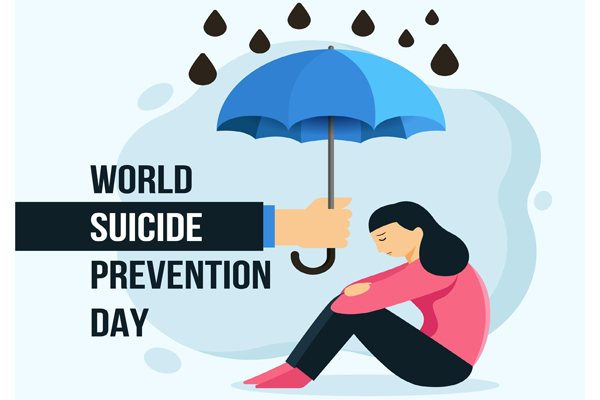Today on 10th September we observe World Suicide Prevention Day. It’s also Suicide Prevention Month – a month-long campaign to inform and engage health professionals and the general public about the warning signs of suicide and how to prevent it.
According to the World Health Organisation (WHO), more than 700,000 people die due to suicide every year – which is one person every 40 seconds. Around 77% of global suicides occur in low- and middle-income in countries. It’s also the fourth leading cause of death in 15-19-year-olds. US statistics show that males commit suicide 3.5 times more often than females, with most suicides in the 45-64 age group. The US Army reports military veterans have double the suicide rate of non-veterans. Suicide rates for lesbian, gay, bisexual, transgender and questioning youth and adults also tend to be higher worldwide. In fact, in the US, they are three times higher than national averages.
DIRE STATISTICS
Suicide risk has also increased in the era of Covid-19, with cases of depression on the up globally. In fact, the risk of depression for US workers has risen an alarming 102% since the beginning of the pandemic, according to recent findings. So it’s vital that we are there for each other – as friends, colleagues, family and/employer – and take steps to prevent suicide.
According to organisations such as the International Association for Suicide Prevention (IASP) and American Foundation for Suicide Prevention (AFSP), you don’t have to be a mental health professional to make a difference. There are simple things we can all do to safeguard our own and each other’s mental health. From learning the warning signs for suicide and what to do if you are worried someone is struggling, to advocating for smart suicide prevention legislation, to having a #RealConvo about your own or others’ mental health, to bringing education programmes to your workplace/community, we can all learn new ways to help each other save lives.

SUPPORTING EMPLOYEES/COLLEAGUES
If you are a manager or an employer, it is critical that you are prepared to support colleagues at risk of suicide and support staff to help prevent it, according to suicide prevention organisations such as IASP and AFSP. Although people at risk of suicide may try to hide how they are feeling, they often give out warning signs, or you might notice changes in their behaviour or be aware of events in their life that could be affecting them. Some common signs to look out for include:
- Conversations about suicide
- Conversations about being a burden to others
- Tallking about feeling trapped or having unbearable pain
- Anxiety and/or irritability
- Insomnia and/or trouble sleeping
- Changes in appearance
- Taking time off work
- A recent stressful event/loss
- Previous suicide attempt/s
- Social withdrawal/or feeling alienated
- Preoccupied with a problem/thought
Whether you’re a manager, team leader, or even a colleague, you should act immediately if you notice any of the above warning signs. If you feel out of your depth, or not qualified enough, ask your colleague/staff member if you can contact someone on their behalf to help. However, according to suicide prevention experts, we can all do our bit to support each other and help to prevent suicide. Here are just a few suggestions:
- Learn to care for your own mental health.
- Educate yourself and others on the signs.
- Learn how you can become an advocate.
- Get involved to help raise awareness and have a #RealConvo with someone.
- Add crisis resources to your phone/contacts lists.
- Connect suicide loss survivors to resources when needed.
For more information, contact AFSP or IASP.







































